Posted on
July 11, 2014 by
Martin Banks
With the defeat of California Chrome in the Belmont Stakes, we were robbed of witnessing one of the greatest accomplishments in American Sports: the completion of the Triple Crown. Only eleven horses have won the Kentucky Derby, the Preakness and the Belmont Stakes — the three races that make up that vaunted title. Some names of Triple Crown winners are more memorable than others, but let’s take a look at three of the most notable.
Sir Barton
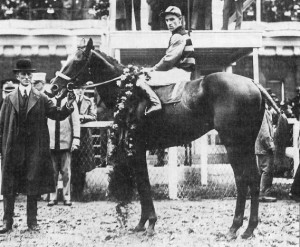
Sir Barton was the first horse to win the Triple Crown, when he won the Belmont Stakes in 1919. Originally, Sir Barton was just supposed to be the pacemaker for a higher regarded horse named Billy Kelly, but that all changed when Sir Barton won the Triple Crown by five lengths. He never trailed in any of the races he competed in, but somehow Sir Barton never really got the recognition he deserved.
His legacy was somewhat marred when he lost a match race against the famous Man o’ War. Sir Barton had some hoof problems that were compounded by the track’s hard surface, which led to his seven length loss to Man o’ War. Still, being the first ever Triple Crown Winner is something Sir Barton could be very proud of. Read the rest of this entry →
Tags: Horse RacingSecretariatSir BartonWar Admiral
Category
Horse Racing, Scott Huntington, Sports History
Posted on
May 17, 2014 by
Dean Hybl
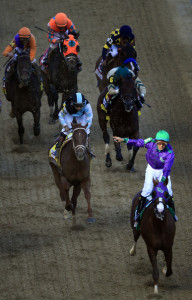
California Chrome will look to break the 36 year drought of Triple Crown champions.
It is very likely that you had no idea that the Preakness Stakes was held this afternoon near Baltimore. However, now that California Chrome has won the first two legs of the Triple Crown you can guarantee that you will hear plenty about the Belmont Stakes, which will be held on June 7th.
While all but the most die-hard of sports fans generally don’t pay much attention to the three triple crown horse races contested over a five year period from early May through early June each year, there is still a little magic left in the idea of the Triple Crown.
Always recognized as an amazing accomplishment, it has been 36 years since a horse has been able to win the Kentucky Derby, Preakness and Belmont in the same year. Since Affirmed became the 11th horse to accomplish the feat in 1978 (ironically the third horse to do it in five years following Secretariat and Seattle Slew), 12 horses have won the first two races, but failed to capture the most physically demanding and longest of the three races.
The first few times that a horse fell short – Spectacular Bid in 1979, Pleasant Colony in 1981, Alysheba in 1987 and Sunday Silence in 1989 – the failure wasn’t necessarily a huge deal as it had only been a few years since the last Triple Crown and each had come pretty close to joining the elite club. Read the rest of this entry →
Tags: belmont stakesCalifornia ChromeTriple Crown
Category
Horse Racing, Sports History
Posted on
February 19, 2013 by
Dean Hybl
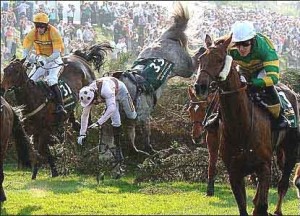
The Aintree Racetrack offers challenge for both the jockey and horse.
While the Kentucky Derby is the best known horse racing event in the United States, a month prior to the Derby, Liverpool, England will serve as the host for a very different, yet equally exciting horse racing spectacle. The 2013 John Smith’s Aintree Grand National Hunt race is the world’s most popular steeplechase event.
Originally held at the Aintree Racetrack in 1839, the 2013 event is slated for April 6th and serves as the culmination of the three-day Aintree Festival.
The Grand National provides a unique set of challenges that only the best jockeys and horses can conquer.
The racecourse is triangular in shape and includes 16 fences, all except The Chair and the Water Jump are jumped twice. The course has a reputation as the ultimate test of horse and jockey, and just completing the two circuits is considered a great accomplishment. Some of the fences are famous for their difficulty, most specifically Becher’s Brook, The Chair, and the Canal Turn.
Unlike the Kentucky Derby and American Triple Crown, which includes the best three-year-old horses, the Aintree Grand National is typically won by a horse with far more years and experience.
In 2012 11-year-old Neptune Collonges, ridden by jockey Daryl Jacob for trainer Paul Nicholls and owner John Hales was able to conquer the challenging track and claim victory in the Grand National. He was the oldest winner of the Grand National since 12-year-old Amberleigh House in 2004.
The oldest horse to win the Grand National was 15-year-old Peter Simple in 1853. Since 1994 the youngest horse to win the race was eight-year-old Bindaree in 2002 and the race has been won 12 times in that stretch by a horse with double-digits in the age column.
For many, one of the great allures of this annual event is the many betting opportunities and certainly the recent history of older winners is one thing for those who enjoy betting on this exciting event to consider as they ponder which horse and jockey they will support. Through William Hill Grand National 2013 you can watch all the races of the three-day festivities through livestreaming and also keep track of the latest betting odds and opportunities.
Tags: Grand NationalHorse RacingJohn Smith's Aintree Grand National
Category
Horse Racing
Posted on
August 23, 2012 by
Thomas Rooney
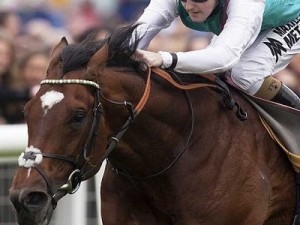
Where will Frankel run next?
After Frankel’s incredible performance at York on Wednesday afternoon, where he stormed to victory by seven lengths, questions are now arising as to whether he will run in the Prix de L’Arc de Triomphe at Longchamp on October 7th.
Those assessing Racing tips from Bet Victor note how the Juddmonte International Stakes was the first time Frankel had ran over a mile, but he was still the red-hot favourite to come out on top and did not disappoint.
Owner Prince Khalid Abdullah has now hinted that is it possible that the four-year-old may now compete in the Arc, but he will hold talks with Sir Henry Cecil before making any final decisions.
He said: “I will talk to Henry and, if he thinks so, we will take him there.”
Frankel does not currently hold entry for the Arc though and it is being suggested that Prix du Moulin at Longchamp next month and either the Queen Elizabeth II Stakes or Champions Stake at Ascot in October are the more likely races that he will compete in before retirement to stud at the end of the campaign. Read the rest of this entry →
Tags: Frankel
Category
Horse Racing
Posted on
July 14, 2011 by
Rod Crowley
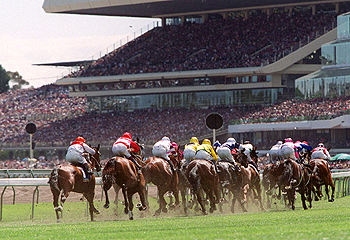 Although now known universally as “the race that stops the nation” the very first Melbourne Cup was raced at Flemington Park in November 1861 and was an absolute spectacle which saw one horse bolt before the start and three fall during the two mile race, two of which had to be put down. That first race was eventually won by a horse from Melbourne’s rival city of Sydney named Archer an unfancied outsider. He had allegedly walked from Sydney to contest the race but whether he had or hadn’t became academic as he romped home by six lengths from the Victorian bred favourite and champion Mormon. That win by an ‘outsider’ fuelled the interstate rivalry that helped to develop the popularity that the race still holds to this day in Australia. The win earned Archer’s connections the equivalent to $1,000 AU.
Although now known universally as “the race that stops the nation” the very first Melbourne Cup was raced at Flemington Park in November 1861 and was an absolute spectacle which saw one horse bolt before the start and three fall during the two mile race, two of which had to be put down. That first race was eventually won by a horse from Melbourne’s rival city of Sydney named Archer an unfancied outsider. He had allegedly walked from Sydney to contest the race but whether he had or hadn’t became academic as he romped home by six lengths from the Victorian bred favourite and champion Mormon. That win by an ‘outsider’ fuelled the interstate rivalry that helped to develop the popularity that the race still holds to this day in Australia. The win earned Archer’s connections the equivalent to $1,000 AU.
Somewhat amazingly, the New South Wales bred Archer was entered into the Melbourne Plate the following day and won that two mile event too taking back to Sydney another good sized purse.
Mormon returned to Flemington 12 months later, this time with an eight length success a winning distance that has never been bettered since. The unfortunate Mormon had to content himself once again by finishing in second place. Archer’s entry was the reason why the crowd had doubled in size that year with plenty of home supporters hoping to see him beaten but wasn’t to be the case and the result consigned his name into Melbourne Cup folklore.
Unfortunately, that was to be Archer’s last run in the increasingly popular race. It had been hoped that he would turn up in 1863 but due to the fact that his entry for the race arrived during a Victoria State Public Holiday he was never entered and despite protests by his connections, he was subsequently scratched.
The withdrawal of Archer caused much consternation for both Victorians and those from New South Wales and in a show of support for Archer’s trainer, Etienne de Mestre, plenty of owners withdrew their entries from the race, leaving just a field of seven runners. It would have been a minor miracle however if Archer had won the race for a third time as he would have been carrying 11st 4Ib over a stone more than the next highest in the handicap.
De Mestre also became a name synonymous with the Melbourne Cup, before retiring he trained three further winners of the race, Tim Whiffler in 1867, Chester in 1877 and Calamia in 1878.
The victory by ‘Tim Whiffler’ was particularly amusing as he was one of two horses that had turned up for the race with that name. They had received the names courtesy of a verse in a poem written by Adam Lindsay Gordon in 1865 where he predicted that a horse called Tim Whiffler would win the Melbourne Cup. The stewards and the connections agreed that they both needed to have their names tweaked, so for the purpose of the race, the De Mestre entry was called “Sydney Tim Whiffler”, while the other, which was bred in Melbourne was called “Melbourne Tim Whiffler”. The crowd of course thought this was a great idea but only until the ‘Sydney’ version got up to win!
The Melbourne Cup ahs gone on from strength to strength since those early days and is now the number one horse racing in Australia attracting a crowd of over 100,000. The 2011 Melbourne Cup takes place on 1st November.
Tags: melbourne cupracing
Category
Horse Racing
Posted on
July 06, 2011 by
Dean Hybl
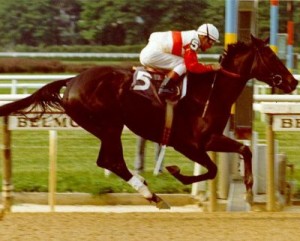
Many consider Ruffian to be the greatest female horse of the 20th Century.
It was 36 years ago today that an event created to be a celebration of horse racing greatness turned tragic and resulted in the death of one of the top female racehorses of all-time.
A coal black filly with champion blood lines that included Native Dancer and Bold Ruler, Ruffian had no equals during her two year racing career and was U.S. Filly Champion as a two and three year old.
In 10 career races, Ruffian was never defeated and in 1975 claimed the Filly Triple Crown (now called the Triple Tiara). She established a new record in eight different stakes races, seven of which still stand.
Her dominating victories against female horses led many to wonder if she was capable of competing with the top male horses of her time.
This led on July 6, 1975 to a match-race between Ruffian and 1975 Kentucky Derby winner Foolish Pleasure at Belmont Park. Coming only two years after the Billie Jean King-Bobby Riggs “Battle of the Sexes”, the race was promoted as a chance for America’s finest filly to show her overall dominance in the “Equine Battle of the Sexes”.
Interestingly, jockey Jacinto Vasquez was the primary rider for both horses, but chose to ride Ruffian for the match race and many experts fully expected Ruffian to pull off the victory. Read the rest of this entry →
Tags: Foolish PleasureHorse RacingRuffian
Category
Horse Racing, Sports History





